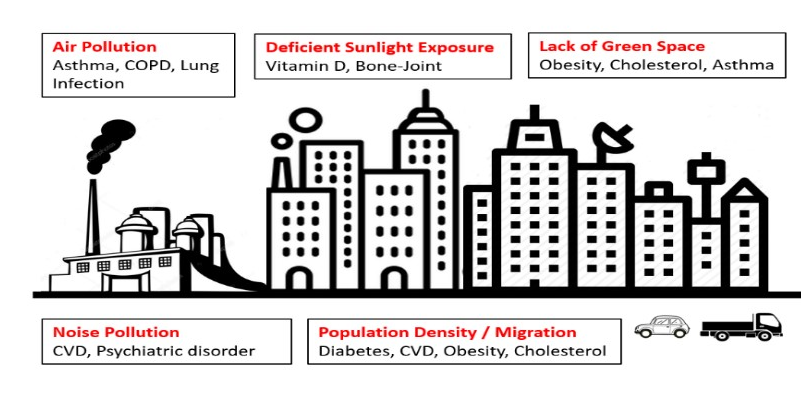City Know-hows

Our cross-sectional study of 272 neighbourhoods of thirteen cities shows that diverse physical and social attributes of neighbourhoods influence mental well-being of the citizens in the Asia and Africa.
Share
Target audience
Urban Planners in the study cities, UN-Habitat, National policy makers and cities in the Global South.
The problem
Although the role of space and place are well understood in the Western academic literatures on health, Southern academic literature is inadequate, cross-sectional studies do little to recognise this nexus. This gap in the literature needs to be filled to promote neighbourhood- and place-focused health planning.
What we did and why
Our paper highlights the issue that there are notable links between neighbourhood (as a place) with mental health. In addition, a comparative analysis demonstrates similarities and dissimilarities among different cities, continents and contexts. This advances arguments in favour of acknowledging the role of geographic influences on the neighbourhood effects which influcence mental health.
Our study’s contribution
Our study recognises the influential neighbourhood effects on health outcomes in Southern context. The conclusions drawn in this study is unique and will provide future guidelines for neighbourhood health policies and research.
Impacts for city policy and practice
Our arguments in this paper are founded on large sample size across 13 Southern cities. There are strong arguments in favour of contributory impact of the neighbourhood planning for heath, policy makers pleaze take note. We have also identified a number of key influencers from this research, these will help policymakers in identifying the priority areas urban health planning for cities in the Global South.
Further information
An exhibition that highlighted urban issues of Dhaka. Some of the works here featured the mental health challenges at individual and city level.
Full research article:
The neighbourhood effect on mental well-being in the Global South by Shilpi Roy and Tanjil Sowgat
Related posts

The global COVID-19 pandemic, with its associated issues of isolation, enhanced hygiene practices and contact tracing brought up a number of issues to the public domain, many of which bordered on the nexus between urban planning and public health. We examine how new ideas concerning the linkages between urban planning and public health revealed by the COVID-19 crisis can be integrated into practice and how we might leverage this knowledge to build more just, healthier and liveable cities.

Open spaces are known to improve the health and well-being, however there are few studies from developing countries. This Nigerian study examinessocio-economic characteristics of residents, attributes and uses of neighbourhood open spaces and self-rated health.

New research on India’s ageing population reveals urban-rural disparities’ impact on health. Urban areas see high rates of obesity, cardiovascular diseases, diabetes, and high cholesterol. Urgent call for urban planning and health policies